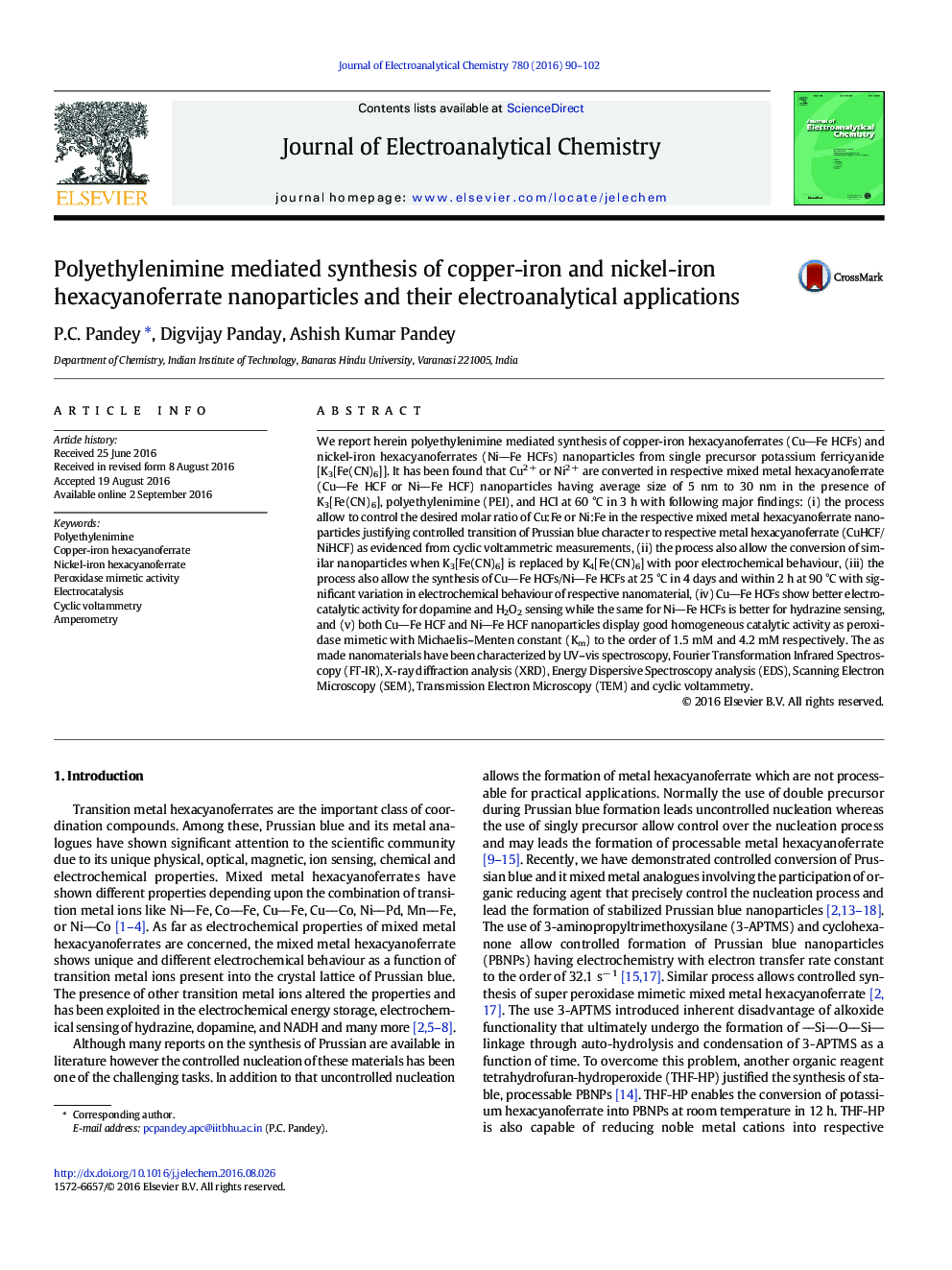| کد مقاله | کد نشریه | سال انتشار | مقاله انگلیسی | نسخه تمام متن |
|---|---|---|---|---|
| 6477149 | 1426595 | 2016 | 13 صفحه PDF | دانلود رایگان |
We report herein polyethylenimine mediated synthesis of copper-iron hexacyanoferrates (CuFe HCFs) and nickel-iron hexacyanoferrates (NiFe HCFs) nanoparticles from single precursor potassium ferricyanide [K3[Fe(CN)6]]. It has been found that Cu2 + or Ni2 + are converted in respective mixed metal hexacyanoferrate (CuFe HCF or NiFe HCF) nanoparticles having average size of 5 nm to 30 nm in the presence of K3[Fe(CN)6], polyethylenimine (PEI), and HCl at 60 °C in 3 h with following major findings: (i) the process allow to control the desired molar ratio of Cu:Fe or Ni:Fe in the respective mixed metal hexacyanoferrate nanoparticles justifying controlled transition of Prussian blue character to respective metal hexacyanoferrate (CuHCF/NiHCF) as evidenced from cyclic voltammetric measurements, (ii) the process also allow the conversion of similar nanoparticles when K3[Fe(CN)6] is replaced by K4[Fe(CN)6] with poor electrochemical behaviour, (iii) the process also allow the synthesis of CuFe HCFs/NiFe HCFs at 25 °C in 4 days and within 2 h at 90 °C with significant variation in electrochemical behaviour of respective nanomaterial, (iv) CuFe HCFs show better electrocatalytic activity for dopamine and H2O2 sensing while the same for NiFe HCFs is better for hydrazine sensing, and (v) both CuFe HCF and NiFe HCF nanoparticles display good homogeneous catalytic activity as peroxidase mimetic with Michaelis-Menten constant (Km) to the order of 1.5 mM and 4.2 mM respectively. The as made nanomaterials have been characterized by UV-vis spectroscopy, Fourier Transformation Infrared Spectroscopy (FT-IR), X-ray diffraction analysis (XRD), Energy Dispersive Spectroscopy analysis (EDS), Scanning Electron Microscopy (SEM), Transmission Electron Microscopy (TEM) and cyclic voltammetry.
Journal: Journal of Electroanalytical Chemistry - Volume 780, 1 November 2016, Pages 90-102
